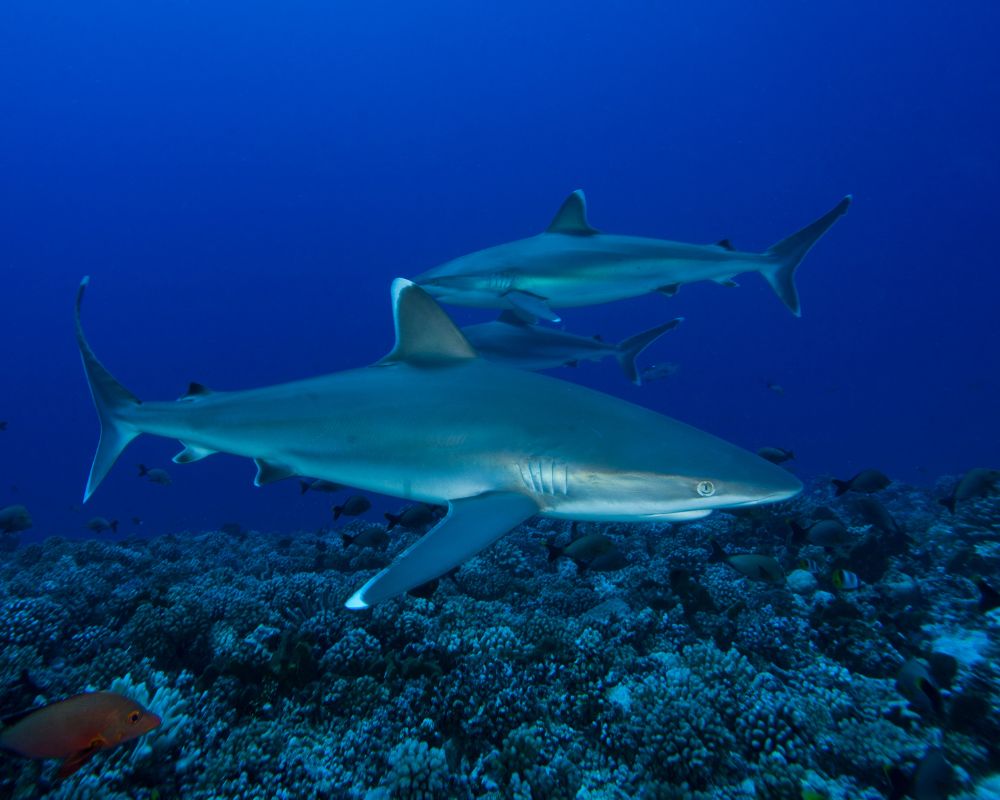Have you ever wondered how great white sharks eliminate waste? It’s not exactly the first thing that comes to mind when thinking about these apex predators, but understanding their excretory process can actually provide valuable insights into their biology and behavior.
In this post, we’ll take a deep dive into the fascinating world of great white shark excretion. As a marine life enthusiast, you’re probably curious about the various ways in which marine animals process and eliminate waste, and great white sharks are no exception. While they may not be the most glamorous topic, the intricacies of great white shark digestion and excretion are actually quite fascinating.
Through this post, we’ll explore the anatomy of the great white shark, including its digestive and excretory systems, and how they compare to those of other marine animals. We’ll also delve into the specific process of defecation in great white sharks and the potential impact of their excretion on the marine ecosystem.
Great white sharks, like other sharks, excrete waste through a single opening called the cloaca, located near their anal fin. Their poop, also known as feces, is expelled from this opening in a streamlined manner, which helps reduce drag while swimming. However, there is limited scientific research on the frequency and volume of great white shark poop.
Before heading to the details of defecation, we need first to understand the anatomy of the great white shark’s digestive system:
Anatomy of a Great White Shark

Great white sharks are among the largest predatory fish in the ocean, and their anatomy has evolved to support their unique lifestyle. From their sharp teeth to their powerful tail, every part of a great white shark’s body serves a specific purpose. In this section, we’ll take a closer look at the anatomy of a great white shark, including its digestive and excretory systems.
Digestive System Of Great White Sharks
The digestive system of a great white shark begins in the mouth, which is lined with several rows of razor-sharp teeth. Unlike humans, sharks don’t chew their food; instead, they use their teeth to grab, tear, and swallow large chunks of prey. Once swallowed, the food enters the stomach, where enzymes break it down into smaller pieces.
One interesting feature of the great white shark’s stomach is its ability to expand to accommodate larger prey. When a great white shark catches a large animal, such as a seal or sea lion, its stomach can stretch to hold the entire animal. This allows the shark to consume a large amount of food in one sitting, which can sustain it for weeks or even months.
Excretory System Of Great White Sharks
Like all animals, great white sharks need to eliminate waste from their bodies. The excretory system of a great white shark includes several organs, including the liver, kidneys, and cloaca. The liver plays an important role in processing waste products, while the kidneys filter waste out of the blood.
The cloaca is a multi-purpose opening located at the base of the shark’s tail. In addition to serving as an outlet for waste elimination, the cloaca is also used for reproduction. Waste products and reproductive materials exit the body through the cloaca and are released into the water.
Cloaca In Great White Sharks
The cloaca is a unique feature of many marine animals, including great white sharks. In addition to serving as an outlet for waste elimination and reproduction, the cloaca also plays a role in osmoregulation or the regulation of salt and water balance in the body. By controlling the release of urine and other waste products, the cloaca helps to maintain the proper balance of fluids and electrolytes in the shark’s body.
How Do Great White Sharks Poop?
While great white sharks are known for their fearsome reputation as predators, little is known about how they eliminate waste. Here, we’ll explore the specific process of defecation in great white sharks, including the potential impact on the marine ecosystem.
Defecation In Great White Sharks
Unlike many other marine animals, great white sharks do not have a dedicated anal opening for waste elimination. Instead, they excrete waste through their cloaca, the same opening used for reproductive purposes.
When a great white shark defecates, the waste products are expelled from the cloaca in the form of fecal pellets. These pellets are made up of undigested materials, such as bone, skin, and other hard substances, that the shark’s digestive system was unable to break down.
Fecal Pellets In The Marine Ecosystem
Fecal pellets play an important role in the marine ecosystem, as they provide a source of nutrients for other organisms. As the pellets sink to the ocean floor, they are broken down by bacteria and other microorganisms, which release nutrients such as nitrogen and phosphorus into the water. These nutrients can then be taken up by other organisms, such as plankton and algae, which form the base of the ocean food chain.
In addition to providing nutrients, fecal pellets can also serve as a way to track the movements of great white sharks. Scientists can analyze the contents of the pellets to learn more about the shark’s diet and migration patterns. This information can be used to better understand the role that great white sharks play in the marine ecosystem, as well as to develop strategies for their conservation.
Impact of Great White Shark Excretion on the Marine Ecosystem
The excretion of great white sharks can have significant impacts on the marine ecosystem. In this section, we’ll discuss the ways in which shark excretion affects the ocean food chain and the environment as a whole.
Nutrient Cycling
As mentioned earlier, the fecal pellets produced by great white sharks contain a variety of nutrients that can be broken down by bacteria and other microorganisms. This process releases nutrients such as nitrogen and phosphorus into the water, which can be taken up by other organisms and contribute to the ocean food chain. In this way, shark excretion plays an important role in nutrient cycling within the marine ecosystem.
Predator-Prey Relationships
The nutrients released through shark excretion can also have a direct impact on predator-prey relationships within the ocean. For example, the release of nitrogen and phosphorus can stimulate the growth of plankton and algae, which form the base of the ocean food chain. This can lead to an increase in the populations of organisms that feed on these primary producers, which in turn can impact the populations of predators that rely on these organisms as a food source.
Ocean Acidification
In addition to its effects on nutrient cycling and predator-prey relationships, shark excretion can also contribute to the phenomenon of ocean acidification. As the ocean absorbs more carbon dioxide from the atmosphere, it becomes more acidic, which can have harmful effects on a variety of marine organisms. While the contribution of shark excretion to ocean acidification is relatively small compared to other factors such as fossil fuel emissions, it is still an important consideration in the overall health of the marine ecosystem.

